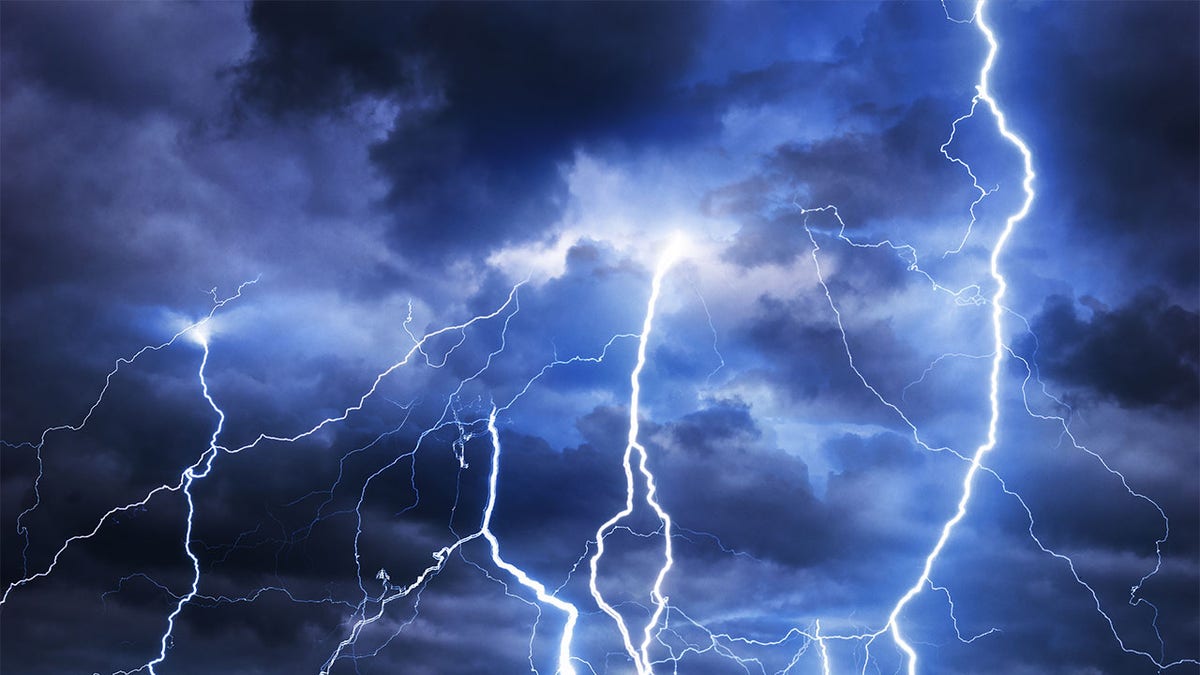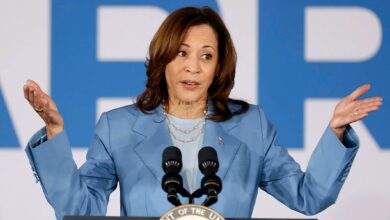On this day in history, June 10, 1752, Benjamin Franklin famously flies kite during thunderstorm
On this day in history, June 10, 1752, Benjamin Franklin reportedly flew a kite during a thunderstorm, with the goal of collecting ambient electrical charge in a Leyden jar — a container that could store an electrical charge for later use.
This potentially would enable him to demonstrate the connection between lightning and electricity.
Franklin showed an interest in the subject of electricity in the mid-1740s when much was still unknown on the topic. For almost a decade he conducted electrical experiments, notes History.com.
Franklin coined a number of terms still used today in this field, including battery, conductor and electrician, and he is known for other important inventions such as the lightning rod.
ON THIS DAY IN HISTORY, JUNE 9, 1891, CELEBRATED COMPOSER COLE PORTER IS BORN IN INDIANA
On a June afternoon in 1752, rain reportedly began to fall from the skies of Philadelphia, and Franklin opted to fly a kite, according to The Franklin Institute of Philadelphia.
He reportedly used a simple kite made with a large silk handkerchief, a hemp string and a silk string. He also had a house key, a Leyden jar and a length of wire.
Franklin’s son, William, reportedly assisted him with the experiment.
Despite a common misconception, Franklin did not discover electricity during this experiment — or at all, for that matter, according to Philadelphia’s Franklin Institute.
“Electrical forces had been recognized for more than a thousand years, and scientists had worked extensively with static electricity. Franklin’s experiment demonstrated the connection between lightning and electricity,” the institute notes.
“It’s a common myth that Franklin discovered electricity,” notes LiveScience.com.
“In 1753, he received the prestigious Copley Medal from the Royal Society.”
“Electricity had already been discovered and used for centuries before Franklin’s experiment,” the site added.
During his time, electricity was understood as “the interaction between two different fluids, which Franklin later referred to as ‘plus’ and ‘minus,’” it also said.
ON THIS DAY IN HISTORY, MAY 15, 1800, PRESIDENT ADAMS MOVES FEDERAL GOVERNMENT FROM PHILADELPHIA TO DC
After his presumed successful demonstration, Franklin continued his work with electricity, going on to perfect his lightning rod invention, The Franklin Institute notes.
“In 1753, he received the prestigious Copley Medal from the Royal Society, in recognition of his ‘curious experiments and observations on electricity,’” says this source.

On Jan. 17, 1706, in Boston, Massachusetts, Franklin was born to parents Josiah Franklin and Abiah Folger, who were candle and soap makers.
Franklin’s education stopped at around age 10; he then began work as an apprentice to his brother, James, who was a printer.
Franklin’s expression “Early to bed, early to rise, makes a man healthy, wealthy and wise,” still has present-day appeal.
In 1723, after a dispute with his brother, he left Boston and moved to Philadelphia, where Franklin continued his work as a printer. While in Philadelphia, he enjoyed business success, publishing the Pennsylvania Gazette and Poor Richard’s Almanac, a series of “homespun proverbs advocating hard work and honesty in order to get ahead,” says History.com.
First published in 1733, his proverb, “Early to bed, early to rise, makes a man healthy, wealthy and wise,” still has present-day appeal.
ON THIS DAY IN HISTORY, MAY 1, 1881, CLARA BARTON, ‘BRAVE’ BATTLEFIELD NURSE, CREATES AMERICAN RED CROSS
For nearly 16 years, between 1757 and 1775, Benjamin Franklin — scientist, diplomat, philosopher, inventor, one of the founding fathers of the United States and more — lived at 36 Craven Street in London, says The Benjamin Franklin House in London.

“While he may have been in London as chief colonial diplomat, his time here encompassed much more than politics,” it also notes.
Benjamin Franklin first visited London as a teenage printer in the mid-1720s and stayed for 18 months, according to Mountvernon.org.
“He returned in 1757 as the most famous American in the world,” the site notes.
ON THIS DAY IN HISTORY, MAY 30, 1868, FIRST DECORATION DAY IS HELD IN REMEMBRANCE OF THOSE LOST IN WAR
While he traveled to Britain as the representative of the Assembly of Pennsylvania, “his prestige was founded on something else entirely,” it continues.

“Franklin was a famous scientist in the Atlantic World, a Fellow of the Royal Society and friends with many of the leading intellectuals of the day, including Joseph Priestley, David Hume, Erasmus Darwin and Richard Price.”
For more Lifestyle articles, visit www.foxnews.com/lifestyle
Beyond scientific achievements, including the ‘key in a thunderstorm’ experiment, his role as a statesman extended for four decades.
“He served as a legislator in Pennsylvania as well as a diplomat in England and France, and Franklin is said to be the only politician to have signed all four documents fundamental to the creation of the U.S.: the Declaration of Independence (1776), the Treaty of Alliance with France (1778), the Treaty of Paris (1783), which established peace with Great Britain and the U.S. Constitution (1787),” according to History.com.
Franklin died at age 84 on April 17, 1790, in Philadelphia, Pennsylvania.
Read the full article here






